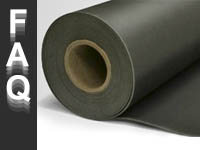
Q: What is soundproofing exactly?
A: Soundproofing, by definition, is to make something impervious or not penetrable by sound. Now when it comes to rooms, soundproofing involves many facets and is an expansive subject in the world of acoustics because of its complexity and involvement. Soundproofing can only be achieved by: making a room completely impervious to sound from the outside completely preventing all sounds inside the room from going out.
Q: What is the difference between soundproofing and acoustic treatment?
A: This is a question we get VERY VERY often. And we’re happy to clarify this. It is important to understand that the purpose of Acoustic Treatment is to condition and improve a rooms overall acoustics by removing unwanted sound elements. Yes, Acoustic Treatment can Reduce unwanted noise to a certain degree, but not so much that they can be empirically soundproof. Reduce is not the same as remove, therefore product used for acoustic treatment are not intended to eliminate noise altogether but absorb the less pleasant aspects of loud noises.Soundproofing on the other hand, is more of an involved process than just hanging up panels. Even if you cover all your walls with absorption panels, they will never completely block all noises. Soundproofing requires nearly airtight seals and vibration dampening. In other words decoupling walls and floors so that sound doesn't travel through vibration.Even the standards used to measure either effect are different. Soundproofing product effectiveness is measured in STC’s or Sound Transmission Coefficient. Acoustic Treatment is measured in NRC which is Noise Reduction Coefficient. These measurements are completely different and tested using completely different techniques.
Q: Can I use acoustic panels for soundproofing?
A: No, sorry you can’t. It’s not an answer most people like to hear, but it’s true. Acoustic panels are simply not designed for that purpose. We have experimented by enclosing a device such as a high powered air compressor inside a shell built out of acoustic panel materials, but we needed to enclose the entire machine in order to achieve any significant effect. Sure it made the machine a lot quieter, but it did not silence the machine by far. It simply reduced the noise to a more tolerable level. But that was achieved by covering the entire inside of the enclosure, not by placing a panel here and there.
Q: Is there any way to soundproof a room by hanging anything on the walls?
A: Sorry, but no. Even with the latest advents in science and technolgy, such a thing is not available. (Believe me, we have searched high and low) To our knowledge there is no soundproofing product made on earth that works by simply hanging something or several things on your wall. The latest innovations in soundproofing technology have more to do with underlays and integration of materials into walls, floors and ceilings. Things like Green Glue, Mass Loaded Vinyl, and the latest breakthrough, Beta Gel (which is still in development stages but is already demonstrating amazing potential.)But you never know. We have seen some pretty amazing things happen these last two decades, with the rise of the information age and revolutions in manufacturing and materials. Maybe someday such a magnificent feat could be accomplished, and when that day comes, we'll be among the first to make it available to you!
Q: Ok, so i can't soundproof with acoustic panels, what can i use then? What special materials are used for soundproofing?
A: Aside from special seals to your doors and windows, you will need two key components in your soundproofing project:
-Mass Loaded Vinyl - A super dense rubber mat you lay beneath your carpet, ceiling and walls. This mat acts as a barrier for sounb
-Green Glue Adhesive - A state of the art visco-elastic adhesive you apply to new sheet rock panels in generous amounts and over existing walls and ceilings and helps isolate sheet rock by reducing vibration caused by sound.
-STC Rated Sheet Rock -Using high stc sheet rock adds effectiveness to your overall soundproofing project.
Q: What's the easiest ways to use these materials without spending a fortune?
A: Here is a typical shared wall soundproofing scenario:
On our website in our soundproofing category, you can find the most critical, proven, time and money saving soundproofing components on the market.
Typical deployments are done in two phases.
Application is as follows:
Vinyl to Wall Application.
Apply the mass loaded vinyl to your existing walls. If you are down to the bare studs, attach the vinyl to the studs, and be sure you have insulation loaded between the studs . Follow the instructions provided in the mass loaded vinyl product page. For seams leave a small spacing (1/2 to 1/4 inch) and fill in the gap with soundproofing sealant.
Phase II - 2nd Sheet-Rock Layer
Apply soundproofing glue on the wall-facing plane of the new sheet rock, and attach the new sheet rock to the other side of the vinyl. Again, you'll need a few nails and screws to get it all done.
Be sure to leave some spacing between sheet segments and fill them with soundproofing sealant. You should be able to sand the sealant down once it hardens. Each sealant tube dispenses about 50 linear feet or more.
Paint the wall, give it about week for the glue to cure and the treatment to come into full effect.
If after you do this you can still hear outside sound, or your sound is still heard outside, to a level that is still unsatisfactory, you will need to repeat the process and keep repeating until you get to where you want to be.




